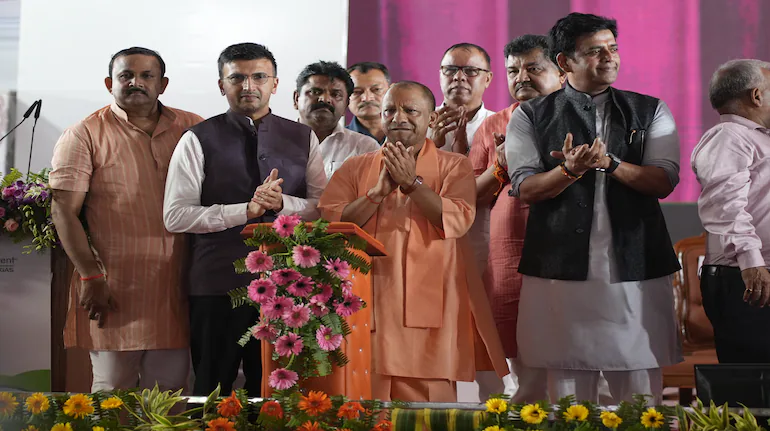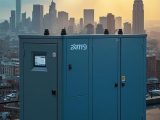
Green Hydrogen Production: Torrent Power Launches 72 tpa Electrolysis Plant in Gorakhpur
August 19, 2025On August 17, 2025, Torrent Power Limited and Torrent Gas Limited flipped the switch on Uttar Pradesh’s first green hydrogen plant in Khanimpur village, Gorakhpur district. Capable of churning out 72 tonnes of green hydrogen a year through renewable-powered electrolysis, this setup is not just the second of its kind in India—it’s the biggest City Gas Distribution blending project in the country. They mix hydrogen at up to 2% into the existing piped gas network, so homes, CNG stations, and industries get a cleaner fuel combo. It’s a clear milestone in India’s push for cleaner energy solutions.
Market Impact
This project puts Torrent Power front and center in India’s clean energy story. By folding green hydrogen into the existing gas grid, they’re unlocking new revenue streams and tapping government perks under the National Green Hydrogen Mission 2030. It’s not just a win for households and CNG pumps—industries benefit too, as blending helps drive industrial decarbonization. Analysts estimate that, once fully scaled, the 2% mix could cut about 10% of pipeline emissions in high-demand zones. For end users, there’s a slight uptick in unit cost, but that’s offset by lower carbon charges and healthier communities. This landmark blending approach also lays groundwork for future scale-ups, signaling to other regions that replicating success is within reach. And investors? They now have a proven model to back similar projects across Uttar Pradesh’s industrial corridors, building out vital hydrogen infrastructure.
Policy Context
When Chief Minister Yogi Adityanath presided over the ribbon-cutting, it was more than a photo op—it was a clear signal that Uttar Pradesh is all in on sustainable development. The plan taps into the state’s ample water supply for electrolysis and showcases the power of public-private partnerships. That 2% blending cap isn’t arbitrary; it follows strict technical guidelines to keep pipelines intact. Meanwhile, policymakers are already reviewing those limits, aiming to raise the bar once material compatibility checks out. The goal? Build consumer trust now and trigger upgrades across municipal gas systems later. It also sets the stage for future public-private projects in other states.
Technical Snapshot
Under the hood, the plant uses a modular electrolyser array powered by onsite solar panels. Water drawn from local sources gets deionized before riding renewable electricity through electrolysis, which splits H2O into hydrogen and oxygen. The purified hydrogen is then compressed and injected into the City Gas Distribution pipeline at a consistent 2% blend. The best part? No fancy retrofits needed for stoves or factory burners at this level. At full tilt, the facility pumps out 72 tonnes of green hydrogen each year—cutting roughly 260 tonnes of CO2 compared to pure natural gas.
Main Insights
- Delivering 72 tonnes per year of zero-emission fuel adds a low-carbon premium to standard gas sales without a major infrastructure overhaul.
- Keeping the blend at 2% is a savvy, risk-managed entry point—appliance compatibility issues are off the table while performance gets validated.
- State and central alignment under the National Green Hydrogen Mission 2030 fast-tracks permits and unlocks subsidies.
- Early adopters win: a modest rise in fuel cost is dwarfed by savings on carbon pricing and health expenses.
Parallel Developments
This isn’t uncharted territory—India’s first green hydrogen blending pilot kicked off earlier under the same mission but only managed under 10 tonnes of output. The Gorakhpur project scales that vision dramatically, serving as a blueprint for big cities looking to decarbonize midstream energy transport. Maharashtra and Gujarat are already lining up similar plans, showing how the effort to mainstream hydrogen infrastructure in CGD networks is gathering steam. This growing network of pilots underscores India’s national drive to take hydrogen production from proof-of-concept to large-scale rollouts.
Expert Viewpoint
Industry insiders note that a 2% blend might seem conservative—but it’s the right move for technical validation. As hydrogen production costs through electrolysis are forecast to plunge by around 30% over the next five years, higher blend ratios—or even dedicated hydrogen corridors—could soon be on the table. Lenders are breathing easier now that technology risks are clearer, unlocking cheaper capital. The catch? We’re still waiting on crystal-clear policies around blend limits and tariff structures. Upcoming government consultations will be key to ironing those out.
Scale-up Prospects
Looking ahead, Torrent Power and Torrent Gas will leverage the lessons from this pilot to crank up capacity. They’ll be monitoring grid stability, exploring storage solutions, and testing pipeline materials’ resilience to higher hydrogen levels. If all goes to plan, Uttar Pradesh could hike the blend to 5%, boosting annual green hydrogen output fivefold. Private partners are already in talks to co-invest in the next wave of electrolysers, proving there’s real market appetite for scalable, low-carbon energy solutions. Such lessons will prove invaluable for other regions aiming to decarbonize heavy industries and transport networks.
Closing Statement
As India maps its path to net-zero, the Gorakhpur green hydrogen plant offers a hands-on blueprint for decarbonizing existing infrastructure and rallying the sizeable investments needed to scale up.



 With over 15 years of reporting hydrogen news, we are your premier source for the latest updates and insights in hydrogen and renewable energy.
With over 15 years of reporting hydrogen news, we are your premier source for the latest updates and insights in hydrogen and renewable energy.